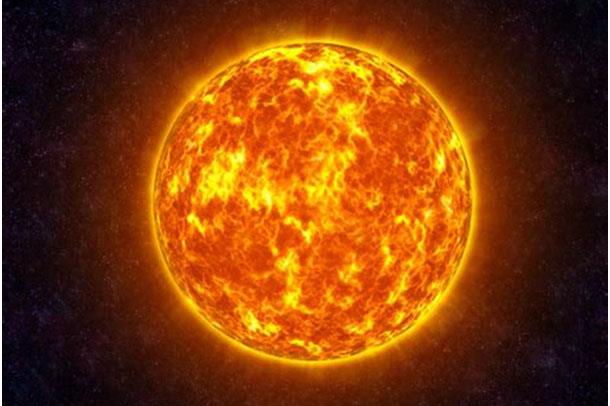Update
HESSEQUA NEWS - Rapidly increasing electricity prices, significant decreases in the price of renewable energy and energy efficiency technologies, as well as increasing availability of financing have all combined to create a large demand for viable small-scale embedded generation and energy efficiency systems in South Africa.
Over the past few years, municipalities have taken up the challenge to explore sustainable energy solutions that will provide a reliable and secure supply of electricity into the future.
"Hessequa municipality is ready to embark on a renewable energy journey as part of a long-term strategy and Integrated Development Plan (IDP). The energy users in the municipality - residential and commercial - form a critical part of this journey," said municipal manager, Johan Jacobs.
Why renewable energy?
"The current drought has, for the first time, opened our eyes to the potential impacts of climate change. Mitigating climate change is all about reducing carbon emissions to ensure that our future generations could still live on earth as we know it. Through renewable energy, we will not only decrease carbon emissions, but we can also reap the many benefits of renewable energy projects," said Jacobs.
"These benefits for Hessequa include innovative and proactive service delivery, sustainable economic development and job creation, environmental conservation, and energy security - all while keeping municipal tariffs affordable."

Irradiation levels in Hessequa: Ranges between 76 kWh/m² in winter months to 221 kWh/m² in summer months (Source: SoDaHelioClim).
What is renewable energy?
It is a source of energy that is not depleted when used, such as sunlight, wind, hydro and biomass. In the Hessequa area we have these energy sources in abundance and although not all these sources might be financially viable currently, it is worth investigating for the future. See attached photos for an overview of the different renewable energy sources and their potential in the area.
Where to start with the renewable energy journey?
In 2013 the municipality worked with the Centre of Renewable and Sustainable Energy Studies of Stellenbosch to conduct a study to determine the viability of rooftop solar photovoltaic (PV) in Riversdale, which resulted in a positive outcome.
In 2015, the Energy Summit was held in collaboration with the School of Public Leadership of Stellenbosch University. This summit concluded, with a vote of 64 to 36, in favour of pursuing renewable energy opportunities.
"On the back of this strong support, Hessequa has taken a proactive approach to the municipality's renewable energy journey and continues to work with experts in the field of renewable energy to investigate potential future renewable energy opportunities."
There is clearly significant solar PV potential in the area and the municipality has decided on solar as the starting point of its renewable energy journey. The first step is to start with small-scale embedded generation (SSEG) to mitigate increases in future electricity costs and to reduce the demand for electricity provided by Eskom.
SSEG is any form of generation, mostly solar PV, that is smaller than 1MW, located on the customer side of the municipal electricity meter and that is used mostly for own consumption.
The renewable energy strategy of the municipality currently focuses on implementing policies around SSEG, which will pave the way for the installation of affordable and safe generation within the municipality.

Biomass availability in high density areas in Hessequa:Range: 97 535 to 220 498 t/yearAverage: 159 017 t/year(Source: Bio-Energy Altas of South Africa).
It will provide a regulated environment for customers who want to convert to a renewable energy solution, such as solar PV. This will help customers save on the cost of electricity, ensure the security of electricity supply and reduce their own carbon emissions footprint.
The SSEG Policy provides guidelines to ensure that the energy system being installed is safe, that the municipality is aware of all SSEG installations, that the customers are on the correct electricity tariff and that accurate metering is installed.
A national shift in the way municipalities function has pushed for tariff charges will consist of a fixed charge and an energy charge for the 2018/2019 financial year.
The potential to implement a feed-in tariff in the 2019/2020 financial year is still being investigated. A feed-in tariff will provide customers with a further cost saving on their electricity bill as they will get 'paid' for excess electricity being fed into the grid.

Alien plants such as Rooipitjie can be a great source of biomass. Also, the current problem with landfill waste can be managed through energy generation.
Where do I start as an electricity user?
Currently, the South African small-scale embedded generation (SSEG) market is dominated by rooftop solar PV given the competitive price, technical maturity and ease of implementation of this technology. Increasingly, solar PV systems are being installed by businesses, residences and government departments around the country.
Solar PV is a system that produces electricity from sunlight without any moving parts. The system uses solar panels which you can see on the rooftops of houses and business buildings. The electricity generated from the sun is converted through a control device to enable it to power electrical devices in the building.
The relative affordability and simplicity of solar photovoltaic generation systems mean that is has become more affordable for citizens to acquire a solar PV system on their rooftops.
Read a previous article: The journey towards renewable energy
'We bring you the latest Garden Route, Hessequa, Karoo news'

















